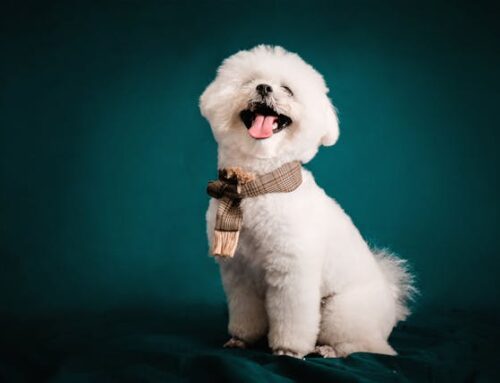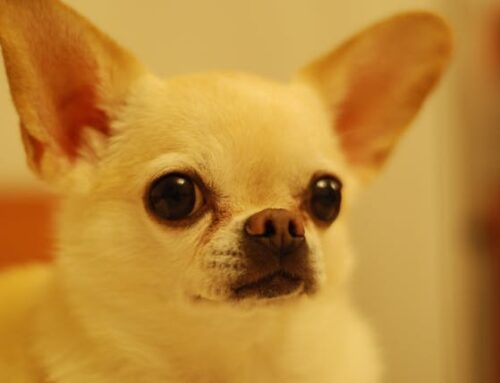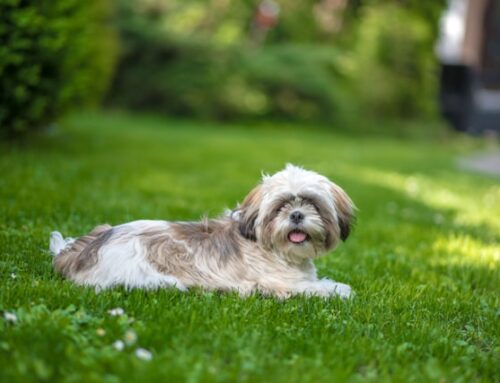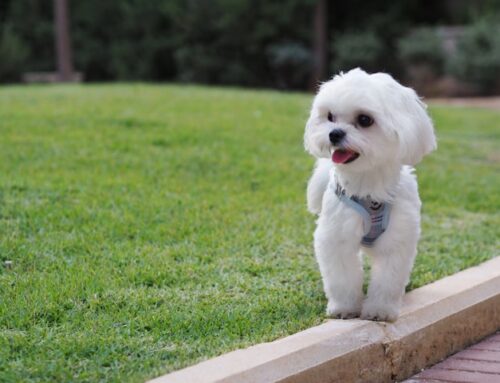Overview
Introduction: Hypoallergenic Dogs
Definition of Hypoallergenic Dogs
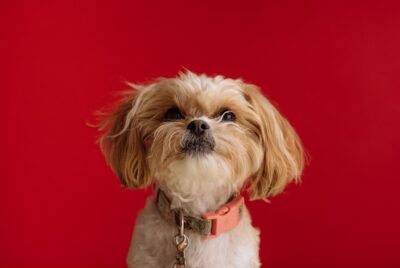
Hypoallergenic dog breeds are often sought after by people with dog or cat allergies. While no breed is completely hypoallergenic, some breeds are considered better for people with allergies because they produce fewer allergens.
The term “hypoallergenic dog” refers to breeds that are less likely to cause allergic reactions in people.
However, it’s important to note that individual dogs may still trigger allergies, and there is no guarantee that any specific breed will not cause a reaction.
The American Kennel Club does not define any breed as truly hypoallergenic, but they do recognize breeds that are often better suited for people with allergies, such as the Poodle, Bichon Frise, and Maltese.
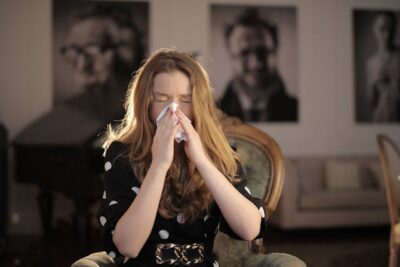
Importance of Hypoallergenic Dogs for Allergy Sufferers
Hypoallergenic dogs can be a game-changer for allergy sufferers, as they produce less pet hair and dander, which are common allergens. This is especially important for those with asthma or other respiratory conditions. The reduced shedding of hypoallergenic breeds can lead to fewer allergens in the home environment, creating a healthier living space for both humans and pets.
While there is no completely hypoallergenic dog, dog breeds like Poodles and Bichon Frises are often better tolerated by allergy sufferers than other breeds. These breeds have hair that grows continuously and does not shed as much as other dogs, which can help reduce the spread of allergens in the home. Additionally, regular grooming and bathing can further minimize allergens, making these breeds a more comfortable choice for those with sensitivities.
For people who still want the companionship of a dog but are allergic to most breeds, hypoallergenic dogs can be a great solution. These dogs can provide the love and companionship that comes with pet ownership without exacerbating allergies. It’s important to note that individual reactions can vary, so it’s always a good idea to spend time with a breed before bringing one home to ensure compatibility with your allergies.

Understanding Dog Allergies
Causes of Dog Allergies
Dog allergies are typically triggered by proteins found in dog dander, saliva, and urine. While no dog breed is completely hypoallergenic, some breeds, like hairless dogs or those with low shedding, produce less dander and are considered better for allergy sufferers.
However, even these breeds can produce enough allergens to cause reactions in some individuals. Finding the best hypoallergenic dogs involves considering factors such as the individual’s sensitivity, as well as the specific proteins to which they are allergic. Understanding these factors can help allergy sufferers choose a dog that is less likely to cause allergic reactions.
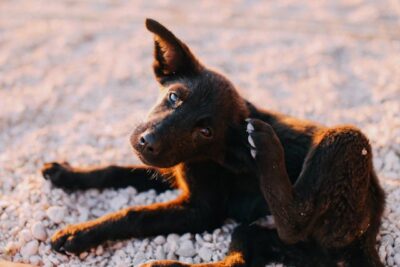
Symptoms of Dog Allergies
Dog allergies can manifest in various ways, with symptoms ranging from mild to severe. Common allergy symptoms in dogs include itching, redness, and irritation of the skin, often leading to excessive scratching or licking. These symptoms can result from various allergens, including pollen, dust mites, and certain foods.
Additionally, dogs may experience respiratory issues such as sneezing, coughing, or wheezing. Some dogs may also develop gastrointestinal symptoms like vomiting or diarrhea. If your dog displays any of these allergy symptoms, it’s essential to consult with a veterinarian for proper diagnosis and treatment.
Treatment for dog allergies typically involves identifying and avoiding the allergen whenever possible. In some cases, medications such as antihistamines or corticosteroids may be prescribed to help manage symptoms. In severe cases, allergen-specific immunotherapy may be recommended to desensitize the dog’s immune system to the allergen over time.
It’s also important to note that some allergies, such as those caused by food, may require a dietary change to eliminate the offending ingredient. Your veterinarian can help determine the best course of action based on your dog’s specific allergy symptoms and overall health.

Impact of Dog Allergies on Allergy Sufferers
For allergy sufferers, finding a truly hypoallergenic dog can significantly impact their quality of life. While no dog is truly hypoallergenic, certain breeds, such as those with low shedding or minimal shedding, are less likely to trigger allergic reactions.
These breeds, like the Poodle or Bichon Frise, produce less pet dander and are often more suitable for allergy sufferers. Managing exposure to dog saliva, which can also contain allergens, is important for reducing allergic reactions in sensitive individuals.
Understanding the impact of dog allergies and choosing the right breed can help allergy sufferers enjoy the companionship of a dog without the discomfort of allergic reactions.
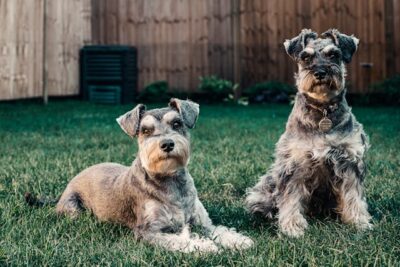
What Makes a Dog Hypoallergenic?
Dog Breeds That Are Considered Hypoallergenic
Several dog breeds are known for being hypoallergenic due to their non-shedding coats and lower production of dander. The Shih Tzu, Miniature Schnauzer, and Miniature Poodles are popular choices for allergy sufferers due to their hypoallergenic qualities. The Bichon family, including the Bichon Frise and the Kerry Blue Terrier, are also known for their non-shedding coat and are considered hypoallergenic.
Additionally, large hypoallergenic dogs like the Giant Schnauzer and Afghan Hounds can be suitable for those looking for a bigger companion with less risk of allergies. Other breeds, such as the Bedlington Terrier, Chinese Crested, and Kerry Blue Terriers, are also known for their hypoallergenic qualities and can make excellent companions for those with allergies.
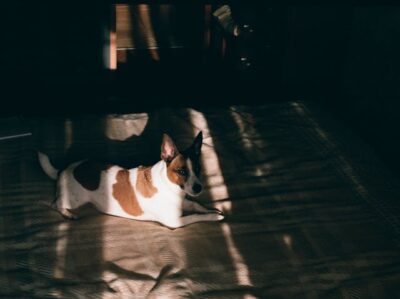
How Hypoallergenic Breeds Differ in Coat Type and Dander Production
Hypoallergenic dog breeds vary widely in their coat types and dander production. Some, like the Basenji with its short coat, or the Irish Water Spaniel with its shaggy coat, are known for producing less dander and are considered hypoallergenic.
Breeds with silky hair, such as the Maltese, or a double coat, like the Samoyed, can also be hypoallergenic due to their minimal shedding and dander production. Additionally, dogs with tightly curled coats, such as the Poodle, or dense double coats, like the Portuguese Water Dog, are less likely to trigger allergic reactions in sensitive individuals.
These breeds’ dense coat or wiry coat textures contribute to their hypoallergenic qualities, making them ideal choices for those with allergies.

Benefits of Having a Hypoallergenic Dog
Reduced Allergic Reactions
One of the primary benefits of owning a hypoallergenic dog is the reduced risk of allergic reactions. Non-shedding dogs, like those considered the best hypoallergenic breeds, produce less dander, which is a common allergen.
This can be particularly beneficial for individuals with allergies or asthma, as they are less likely to experience symptoms such as sneezing, coughing, or skin irritation. Additionally, hypoallergenic dogs can make it easier for allergy sufferers to enjoy the companionship of a pet without the discomfort of allergic reactions.
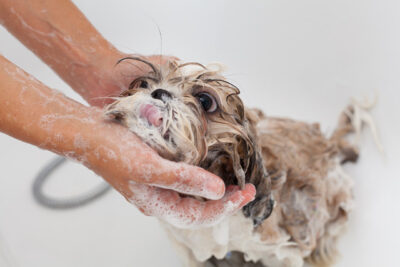
Easier Maintenance and Grooming
Hypoallergenic dogs often require less grooming and maintenance compared to other breeds. Their coats typically do not shed as much, reducing the need for frequent vacuuming and cleaning.
Additionally, hypoallergenic dogs may only require weekly brushing to prevent matting and maintain their coat’s health. This can be a time-saving benefit for busy pet owners who want a dog but have limited time for grooming.
Compatibility with Allergy-Prone Individuals
Hypoallergenic dogs are often more compatible with individuals who are prone to allergies. These dogs produce less dander, which is a common allergen, making them a better choice for people with sensitivities.
Additionally, hypoallergenic breeds are less likely to trigger allergic reactions in allergy-prone individuals, allowing them to enjoy the companionship of a dog without the discomfort of allergies. This compatibility can lead to a happier and healthier relationship between pet and owner.
Popular Hypoallergenic Dog Breeds
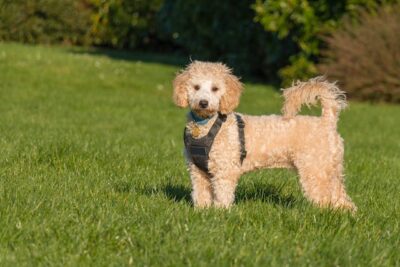
Poodle (Standard Poodle, Miniature Poodle, Toy Poodle)
The Poodle, renowned for its hypoallergenic curly coat, is a popular breed known for shedding minimally and producing less dander. Originally bred as water retrievers, Poodles are celebrated for their intelligence, trainability, and as excellent companions.
Poodles come in three sizes—Standard, Miniature, and Toy—each with its own unique characteristics and size. Despite their differences in size, all Poodles share the same intelligent and playful nature that endears them to families and individuals alike.
With proper care and nutrition, Poodles have a relatively long life expectancy, often living up to 15 years or more. Their versatility in size, combined with their friendly and affectionate demeanor, makes them a popular choice for those seeking a loyal and loving canine companion.
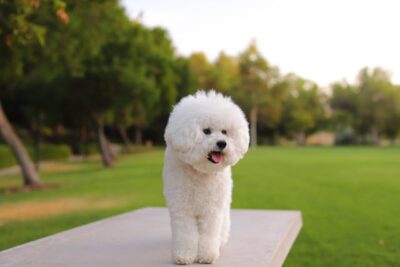
Bichon Frise
The Bichon Frise is a beloved hypoallergenic toy breed celebrated for its cheerful disposition and distinctive fluffy, curly coat that sheds minimally. Originally bred as companion dogs, Bichon Frises are known for their affectionate nature, playful demeanor, and adaptability to various lifestyles.
These delightful dogs are well-suited for families and individuals seeking a loving and loyal companion. They are known for their friendly and outgoing personalities, making them wonderful additions to any home. With proper care and nutrition, Bichon Frises have a relatively long life expectancy, often living between 12 to 15 years or more.
Their charming personality, coupled with their hypoallergenic coat, makes them a popular choice for those looking for a delightful and low-shedding canine companion.
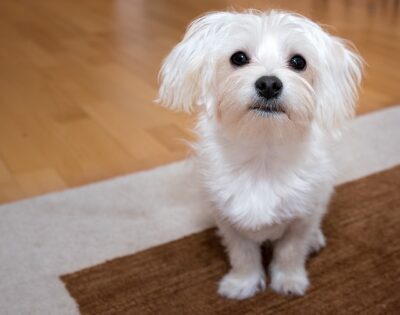
Maltese
The Maltese, a beloved and popular hypoallergenic toy breed, is renowned for its stunning long, flowing white coat and its charming and affectionate personality. These delightful dogs were originally bred as companions for royalty, and their regal demeanor is still evident today in their graceful presence and loving nature.
Maltese dogs are known for their playful and lively personalities, making them delightful companions for individuals and families alike. Despite their small size, they are sturdy and adaptable, making them well-suited for apartment living or for those with limited space.
With proper care and nutrition, Maltese dogs have a relatively long life expectancy, often living between 12 to 15 years or more. Their loyal and affectionate nature, coupled with their hypoallergenic coat, makes them a popular choice for those seeking a loving and low-shedding canine companion.

Shih Tzu
The Shih Tzu, a beloved and popular hypoallergenic breed, is cherished for its stunning long, flowing coat and its friendly and affectionate demeanor. Originally bred as companion dogs for Chinese royalty, Shih Tzus are known for their outgoing nature and make excellent family pets.
Shih Tzus are characterized by their playful and charming personalities, making them wonderful companions for people of all ages. They thrive on human companionship and are happiest when they are part of a loving family.
Despite their small size, Shih Tzus are sturdy dogs with a relatively long life expectancy, often living between 10 to 18 years or more with proper care and nutrition. Their loyal and affectionate nature, coupled with their hypoallergenic coat, makes them a popular choice for those seeking a loving and low-shedding canine companion.
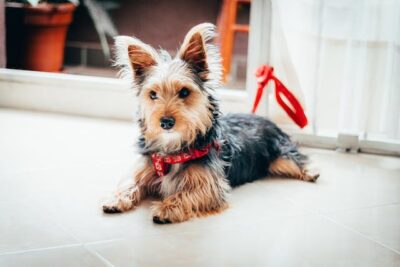
Yorkshire Terrier
The Yorkshire Terrier, affectionately known as the Yorkie, is a beloved hypoallergenic breed cherished for its small size and spirited personality. Initially bred for the practical purpose of catching rats in clothing mills, Yorkies have since become cherished companions known for their loyalty and affectionate nature.
Despite their small stature, Yorkies are known for their bold and confident demeanor. They are often described as having a “big dog” personality in a small body, making them delightful and entertaining companions. With proper care and nutrition, Yorkies have a relatively long life expectancy, often living between 12 to 15 years or more.
Their compact size, combined with their lively and loving nature, makes them a popular choice for individuals and families seeking a small yet spirited canine companion.
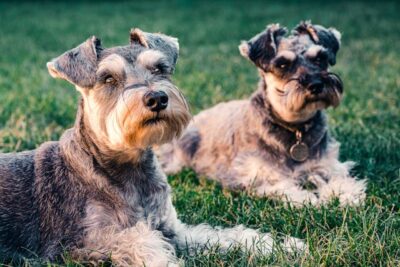
Schnauzer (Miniature Schnauzer, Standard Schnauzer, Giant Schnauzer)
The Schnauzer breed is distinguished by its three sizes: Miniature, Standard, and Giant, all of which are known for their hypoallergenic qualities and signature beards and eyebrows. Despite their differences in size, all Schnauzers share a dense double coat that sheds minimally, making them less likely to trigger allergies.
These intelligent and spirited dogs are known for their lively personalities, making them excellent companions for families and individuals alike. Schnauzers are known for their loyalty and affectionate nature, often forming strong bonds with their owners.
With proper care and nutrition, Schnauzers have a relatively long life expectancy, often living between 12 to 15 years or more. Their hypoallergenic coat, coupled with their playful and loving temperament, makes them a popular choice for those seeking a devoted and low-shedding canine companion.
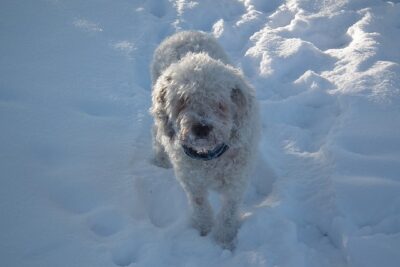
Spanish Water Dog
The Spanish Water Dog is a beloved and popular hypoallergenic breed recognized for its tightly curled coat, which sheds minimally and produces less dander than other breeds. Originally bred as a versatile working dog, Spanish Water Dogs are known for their intelligence, athleticism, and adaptability to various tasks.
These dogs excel in various dog sports and activities, thanks to their agility and quick learning abilities. They are also valued for their strong work ethic and willingness to please their owners. Spanish Water Dogs are known to form strong bonds with their families and are often described as loyal and affectionate companions.
With proper care and nutrition, Spanish Water Dogs have a relatively long life expectancy, often living between 12 to 14 years or more. Their hypoallergenic coat, combined with their playful and intelligent nature, makes them a popular choice for those seeking an energetic and low-shedding canine companion.
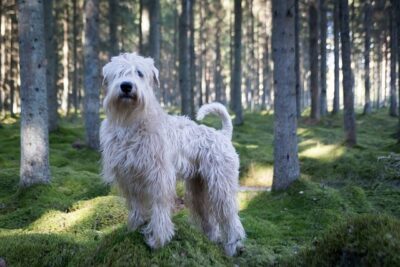
Soft Coated Wheaten Terrier
The Soft Coated Wheaten Terrier is a beloved and popular hypoallergenic breed renowned for its soft, silky coat and playful nature. Originating as a farm dog in Ireland, Wheaten Terriers are esteemed for their friendly demeanor, affectionate disposition, and their ability to get along well with children.
These dogs are characterized by their lively and playful personalities, making them wonderful companions for families and individuals alike. They are known for their boundless energy and love for playtime, making them a joy to have around.
With proper care and nutrition, Soft Coated Wheaten Terriers have a relatively long life expectancy, often living between 12 to 15 years or more. Their hypoallergenic coat, coupled with their loving and friendly nature, makes them a popular choice for those seeking a delightful and low-shedding canine companion.
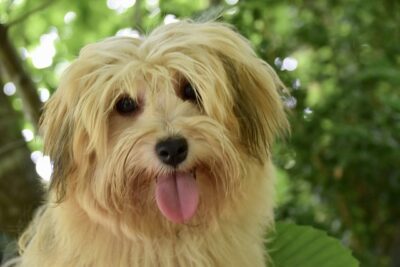
Havanese
The Havanese is a beloved and popular hypoallergenic breed recognized for its silky, flowing coat and lively personality. Originating from Cuba, Havanese dogs are celebrated for their friendly demeanor, intelligence, and their ability to be great companions for families.
These dogs are characterized by their affectionate and playful nature, making them wonderful companions for people of all ages. They are known for their adaptability and are equally happy in apartments or larger homes, as long as they have plenty of love and attention.
With proper care and nutrition, Havanese dogs have a relatively long life expectancy, often living between 14 to 16 years or more. Their hypoallergenic coat, coupled with their charming and affectionate nature, makes them a popular choice for those seeking a delightful and low-shedding canine companion.
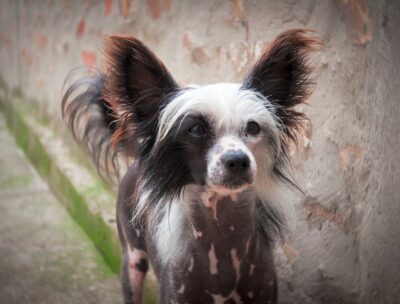
Hairless Chinese Crested Dogs
The Hairless Chinese Crested is a beloved and popular hypoallergenic breed recognized for its unique appearance, which includes a feathery tail and spotted pink skin. Contrary to their name, not all Chinese Crested dogs are hairless; some have a soft, fine coat known as “powder puff,” adding to the breed’s diversity.
Chinese Crested dogs are known for their friendly and affectionate nature, making them great companions for individuals and families alike. They are often described as playful and lively, with a keen intelligence that makes them quick learners.
With proper care and nutrition, Chinese Crested dogs have a relatively long life expectancy, often living between 13 to 18 years or more. Their hypoallergenic qualities, coupled with their charming appearance and loving temperament, make them a popular choice for those seeking a unique and low-shedding canine companion.
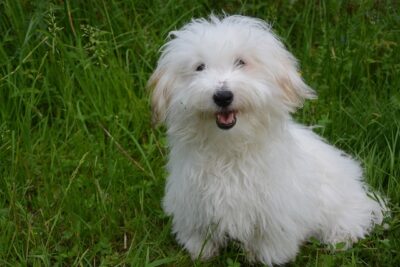
Coton de Tulear
The Coton de Tulear is a beloved and popular hypoallergenic breed admired for its cotton-like coat and charming personality. Originating from Madagascar, Cotons are small in size but big in personality, often referred to as the “royal dog of Madagascar” due to their regal appearance and demeanor.
These dogs are known for their friendly and affectionate nature, making them excellent companions for families. They are often described as playful and social, enjoying the company of both humans and other pets.
With proper care and nutrition, Coton de Tulears have a relatively long life expectancy, often living between 14 to 16 years or more. Their hypoallergenic coat, coupled with their delightful personality and loving nature, makes them a popular choice for those seeking a charming and low-shedding canine companion.
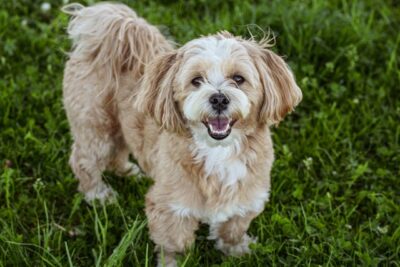
Lhasa Apso
The Lhasa Apso is a beloved and popular hypoallergenic breed admired for its long, flowing coat and dignified demeanor. Originally bred as watchdogs in Tibetan monasteries, Lhasa Apsos are known for their independent nature, intelligence, and loyalty to their families.
These dogs are characterized by their alert and confident personalities, making them excellent guardians and loyal companions. Despite their small size, Lhasa Apsos are sturdy and have a strong sense of self, which is a trait that stems from their history as monastery watchdogs.
With proper care and nutrition, Lhasa Apsos have a relatively long life expectancy, often living between 12 to 15 years or more. Their hypoallergenic coat, combined with their dignified demeanor and loving nature, makes them a popular choice for those seeking a loyal and low-shedding canine companion.

Portuguese Water Dog
The Portuguese Water Dog is a beloved and popular hypoallergenic breed renowned for its curly, waterproof coat and friendly nature. Originally bred to assist fishermen in Portugal, Portuguese Water Dogs are known for their intelligence, energy, and proficiency in water activities.
These dogs are characterized by their playful and spirited personalities, making them ideal companions for active individuals and families. They are often described as affectionate and loyal, forming strong bonds with their owners.
With proper care and nutrition, Portuguese Water Dogs have a relatively long life expectancy, often living between 12 to 15 years or more. Their hypoallergenic coat, coupled with their friendly nature and athleticism, makes them a popular choice for those seeking a versatile and low-shedding canine companion.
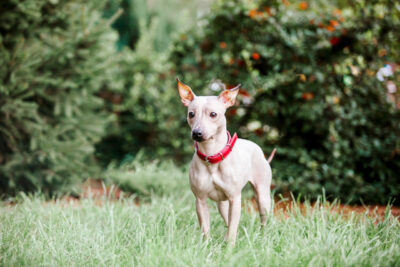
American Hairless Terrier
The American Hairless Terrier is a beloved and popular hypoallergenic breed admired for its hairless coat and lively personality. Originally bred in the United States, American Hairless Terriers are known for their playful nature, intelligence, and their ability to be great companions for active families.
These dogs are characterized by their energetic and spirited personalities, making them well-suited for families who lead active lifestyles. They are often described as affectionate and loyal, forming strong bonds with their families.
With proper care and nutrition, American Hairless Terriers have a relatively long life expectancy, often living between 14 to 16 years or more. Their hypoallergenic coat, coupled with their energetic nature and loving temperament, makes them a popular choice for those seeking a lively and low-shedding canine companion.

Irish Water Spaniel
The Irish Water Spaniel is a beloved and popular hypoallergenic breed recognized for its curly, water-repellent coat and spirited personality. Originating in Ireland as a hunting and retrieving dog, the Irish Water Spaniel is celebrated for its intelligence, athleticism, and its ability to be a great companion for active families.
These dogs are characterized by their lively and playful nature, making them ideal companions for families who enjoy outdoor activities. They are known for their agility and love for water, stemming from their history as skilled water retrievers.
With proper care and nutrition, Irish Water Spaniels have a relatively long life expectancy, often living between 10 to 12 years or more. Their hypoallergenic coat, coupled with their energetic personality and affectionate nature, makes them a popular choice for those seeking a lively and low-shedding canine companion.
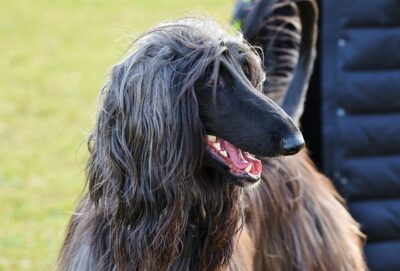
Afghan Hound
The Afghan Hound is a beloved and popular hypoallergenic breed admired for its elegant appearance and independent nature. Originally bred in Afghanistan for hunting, Afghan Hounds are known for their intelligence, agility, and their ability to be loyal companions.
These dogs are characterized by their dignified and aloof demeanor, which is a reflection of their history as hunting dogs in rugged terrain. Despite their independent nature, Afghan Hounds are known to form strong bonds with their families and can be quite affectionate.
With proper care and nutrition, Afghan Hounds have a relatively long life expectancy, often living between 12 to 14 years or more. Their hypoallergenic coat, coupled with their graceful appearance and loyal nature, makes them a popular choice for those seeking a unique and low-shedding canine companion.
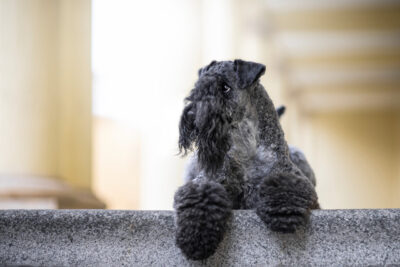
Kerry Blue Terrier
The Kerry Blue Terrier is a beloved and popular hypoallergenic breed admired for its soft, curly blue coat and playful personality. Originating in Ireland, Kerry Blue Terriers were originally bred for hunting and herding, and they are known for their intelligence, energy, and their ability to be great companions for active families.
These dogs are characterized by their spirited and friendly nature, making them ideal companions for families who lead active lifestyles. They are often described as affectionate and loyal, forming strong bonds with their owners.
With proper care and nutrition, Kerry Blue Terriers have a relatively long life expectancy, often living between 12 to 15 years or more. Their hypoallergenic coat, coupled with their playful demeanor and loving temperament, makes them a popular choice for those seeking a lively and low-shedding canine companion.
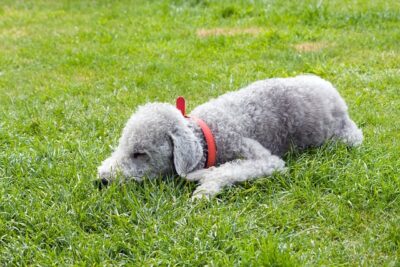
Bedlington Terrier
The Bedlington Terrier is a beloved and popular hypoallergenic breed admired for its unique lamb-like appearance and gentle demeanor. Originating in England, Bedlington Terriers were initially bred for hunting and fighting purposes, but they are now cherished for their intelligence, affectionate nature, and suitability as great family pets.
These dogs are characterized by their distinctive appearance, which includes a curly and woolly coat that contributes to their lamb-like resemblance. Despite their gentle appearance, Bedlington Terriers are known for their intelligence and can be quite playful and energetic, especially when engaging in activities with their families.
With proper care and nutrition, Bedlington Terriers have a relatively long life expectancy, often living between 12 to 16 years or more. Their hypoallergenic coat, coupled with their gentle demeanor and loving nature, makes them a popular choice for those seeking a unique and low-shedding canine companion.

Scottish Terrier
The Scottish Terrier, affectionately known as the “Scottie,” is a beloved and popular hypoallergenic breed renowned for its distinctive appearance and loyal nature. Originating from Scotland, Scottish Terriers were initially bred for hunting rodents, and they are known for their independent and confident personalities.
These dogs are characterized by their iconic silhouette, which includes a wiry coat, erect ears, and a determined expression. Despite their small size, Scottish Terriers are known for their courage and make excellent watchdogs, often alerting their owners to potential dangers.
With proper care and nutrition, Scottish Terriers have a relatively long life expectancy, often living between 11 to 13 years or more. Their hypoallergenic coat, coupled with their loyal and protective nature, makes them a popular choice for those seeking a spirited and low-shedding canine companion.
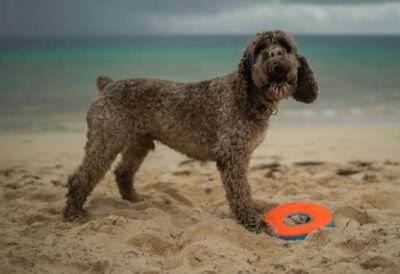
Lagotto Romagnolo
The Lagotto Romagnolo is a beloved and popular hypoallergenic dog breed admired for its curly coat and friendly nature. Originally bred as a water retriever in the marshlands of Romagna, Italy, the Lagotto Romagnolo is now more commonly recognized for its exceptional skill as a truffle dog, used to hunt for truffles in the region.
These dogs are characterized by their affectionate and playful personalities, making them excellent companions for families. They are known for their intelligence and versatility, as they excel not only in truffle hunting but also in various dog sports and activities.
With proper care and nutrition, the Lagotto Romagnolo has a relatively long life expectancy of 15 years or more. Their hypoallergenic coat, coupled with their playful and loyal temperament, makes them a popular choice for those seeking a friendly and low-shedding canine companion.

Caring for a Hypoallergenic Dog
Grooming Tips for Hypoallergenic Dogs
Regular grooming is essential for hypoallergenic dogs to keep their coat clean and free of allergens. Use a gentle, hypoallergenic shampoo to bathe your dog regularly, as recommended by your veterinarian.
Additionally, brushing your dog’s coat regularly can help reduce shedding and minimize the spread of allergens in your home.
Diet and Nutrition for Hypoallergenic Breeds
A balanced diet is crucial for hypoallergenic dogs to maintain their overall health and minimize allergic reactions. Look for high-quality dog food formulated for sensitive skin and stomachs, preferably with limited ingredients to reduce the risk of allergies. Consult with your veterinarian to determine the best diet plan for your hypoallergenic dog’s specific needs.
Exercise and Training Considerations
Regular exercise is important for hypoallergenic dogs to maintain a healthy weight and reduce stress, which can exacerbate allergies. Engage in daily walks, playtime, and mental stimulation activities to keep your dog active and happy. Additionally, positive reinforcement training techniques can help build a strong bond between you and your hypoallergenic dog.

Tips for Allergy Sufferers Considering a Dog
Consultation with an Allergist
Before bringing a dog into your home, consult with an allergist to determine if you have any allergies that may be triggered by dogs. An allergist can perform tests to identify specific allergens and provide advice on managing allergies if you decide to get a dog.
Additionally, they can recommend hypoallergenic breeds or strategies to reduce allergen exposure in your home.
Spending Time with Hypoallergenic Dogs Before Adoption
Before adopting a hypoallergenic dog, spend time with different breeds to see if you have any allergic reactions. Visit friends or family members who have hypoallergenic dogs or spend time at a local shelter to interact with them. This can help you determine if you are truly allergic to dogs and which breeds you may be more compatible with.
Creating an Allergy-Free Zone at Home
Designate a specific area in your home as an allergy-free zone where your dog is not allowed. This can be a bedroom or a particular room where you spend a lot of time. Use high-efficiency particulate air (HEPA) filters in your home to reduce allergens and regularly clean your home to minimize dander buildup.
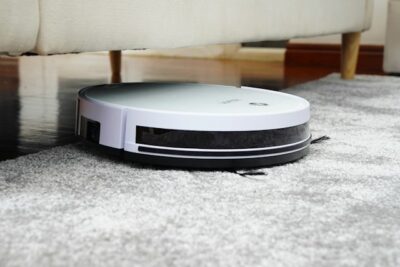
Common Myths and Misconceptions About Hypoallergenic Dogs
Myth vs. Reality: Are Hypoallergenic Dogs Truly Allergy-Free?
The notion of hypoallergenic dogs being completely allergy-free is a myth. While breeds with low shedding coats, like Poodles or Bichon Frises, may produce less dander and be less likely to trigger allergic reactions in some individuals, they still produce allergens.
These allergens can be found in a dog’s saliva and dead skin cells, which are present in all breeds, including other dog breeds. Therefore, while hypoallergenic breeds may be a better choice for allergy sufferers, it’s important to recognize that no dog breed is entirely hypoallergenic.
Hypoallergenic Dogs Do Not Shed
While some hypoallergenic dog breeds shed less than others, no dog is completely hypoallergenic. All dogs produce dander, saliva, and urine, which can trigger allergic reactions in sensitive individuals. It’s important to understand that hypoallergenic dogs may still shed and can produce allergens that affect people with allergies.
Hypoallergenic Dogs Are All the Same Breed
Contrary to popular belief, hypoallergenic dogs are not all the same breed. There are various breeds that are considered hypoallergenic, each with its own unique characteristics and traits. These breeds differ in size, coat type, and temperament, so it’s important to research and find the right hypoallergenic breed that suits your lifestyle and preferences.
Conclusion: Hypoallergenic Dogs
Recap of the Benefits of Hypoallergenic Dogs
- Hypoallergenic dogs, like Poodles and Bichon Frises, produce less pet hair and dander, making them a great choice for allergy sufferers, especially those with asthma or respiratory conditions.
- While no dog is completely hypoallergenic, breeds like Poodles and Bichon Frises are often better tolerated by allergy sufferers than other breeds.
- Reduced risk of allergic reactions: Hypoallergenic dogs, being non-shedding, produce less dander, a common allergen, benefiting individuals with allergies or asthma.
- Easier maintenance and grooming: Hypoallergenic dogs require less grooming and maintenance due to their coats shedding less, saving time for busy pet owners.
- Compatibility with allergy-prone individuals: Hypoallergenic dogs are often more compatible with people prone to allergies, as they produce less dander, reducing the likelihood of triggering allergic reactions.
Final Thoughts on Choosing a Hypoallergenic Dog
Choosing a hypoallergenic dog can be a great option for allergy sufferers who want to enjoy the companionship of a dog without the discomfort of allergic reactions. While no dog breed is completely hypoallergenic, there are several breeds that produce fewer allergens and are better tolerated by allergy sufferers.
When choosing a hypoallergenic dog, it’s important to consider factors such as the breed’s coat type, size, temperament, and energy level. Additionally, spending time with different breeds before adoption can help determine if you have any allergic reactions. Overall, hypoallergenic dogs can make wonderful companions for individuals and families alike, providing love, companionship, and joy without the worry of allergies.
If you’re looking for hypoallergenic puppies for sale in Georgia and surrounding areas, check out our selection. Our puppies are thoughtfully bred from reputable breeders, ensuring you find a furry friend that fits your lifestyle and needs.
FAQs About Hypoallergenic Dogs
- What are hypoallergenic dogs?
- Hypoallergenic dogs are breeds that produce fewer allergens, making them a better choice for dog lovers with allergies. While no dog is completely hypoallergenic, these breeds are less likely to trigger allergic reactions in allergy sufferers.
- Do hypoallergenic dogs shed?
- Most hypoallergenic dogs shed very little, if at all. Their coats are often non-shedding or shed minimally, which can be a relief for allergy sufferers who are also dog lovers.
- Are hypoallergenic dogs suitable for families?
- Yes, hypoallergenic dogs can make great furry friends for families, especially those with allergies. These breeds are often friendly, affectionate, and well-suited for indoor living.
- What are some popular hypoallergenic dog breeds?
- Popular hypoallergenic dog breeds include Poodles, Bichon Frises, Maltese, Shih Tzus, and Yorkshire Terriers. These breeds are known for their hypoallergenic qualities and are often favored by dog lovers with allergies.
- How can I reduce allergens in my home if I have a hypoallergenic dog?
- Regular grooming and bathing of your hypoallergenic dog can help reduce allergens in your home. Additionally, using high-efficiency particulate air (HEPA) filters and cleaning your home regularly can further minimize allergen exposure.
- Can I be allergic to hypoallergenic dogs?
- While hypoallergenic dogs produce fewer allergens, some individuals may still be allergic to them. It’s important to spend time with hypoallergenic breeds before bringing one home to see if you have any allergic reactions.
- Are there any specific grooming requirements for hypoallergenic dogs?
- Hypoallergenic dogs often require regular grooming to prevent matting and maintain their coat’s health. Brushing their coat regularly and using a hypoallergenic shampoo can help reduce allergens and keep their coat clean.
- Do hypoallergenic dogs require special diets?
- Hypoallergenic dogs may benefit from a high-quality diet formulated for sensitive skin and stomachs. Consult with your veterinarian to determine the best diet plan for your hypoallergenic dog’s specific needs.
- Are there any health benefits to owning a hypoallergenic dog?
- Owning a hypoallergenic dog can have health benefits for dog lovers with allergies, as they are less likely to experience allergic reactions. Additionally, the companionship of a furry friend can have positive effects on mental health and well-being.

